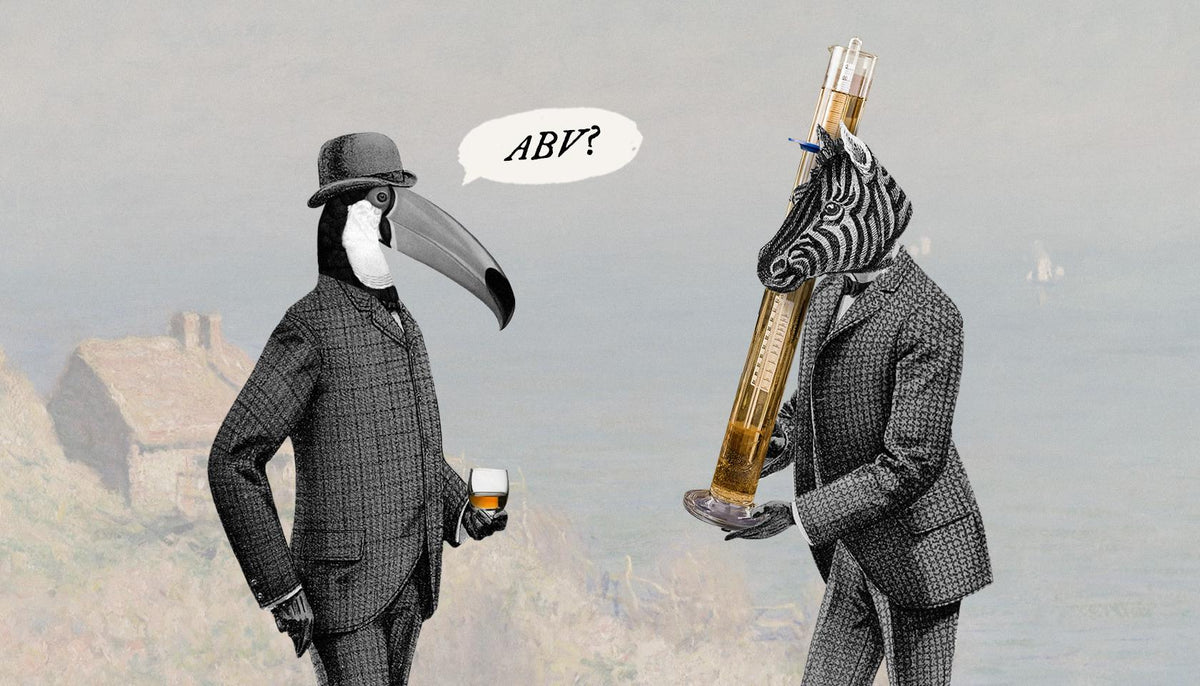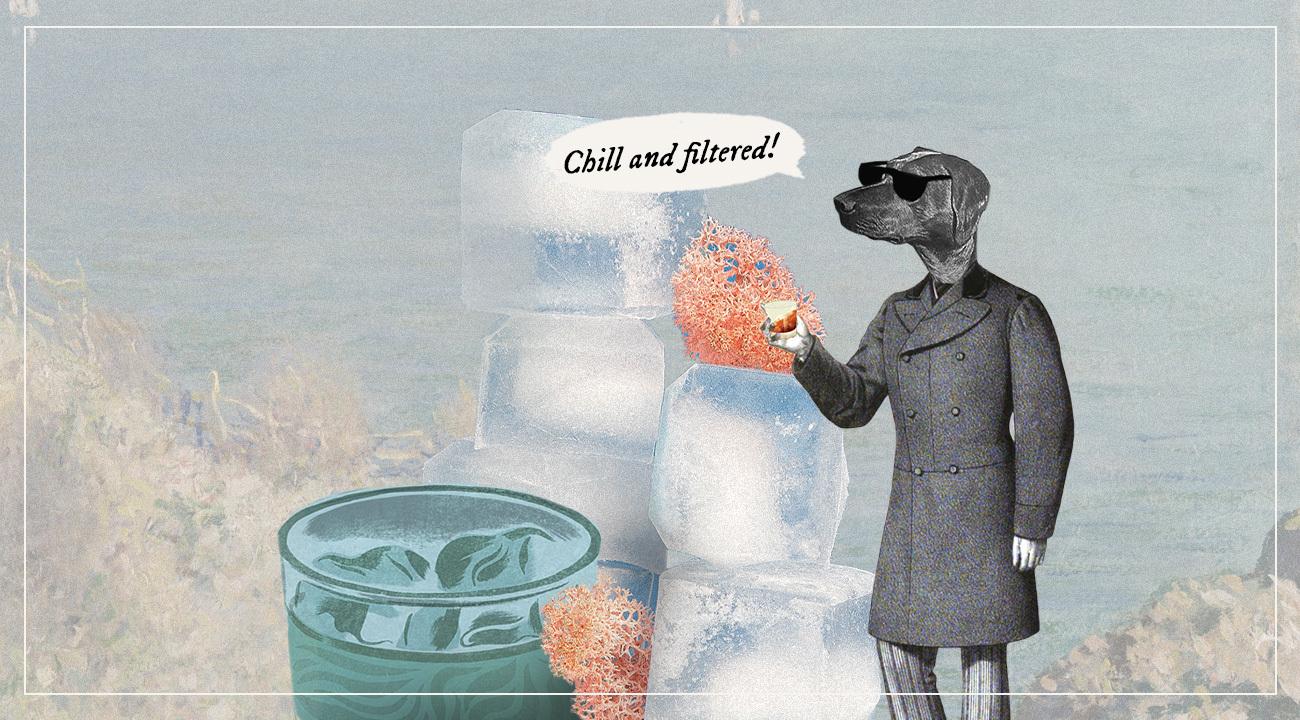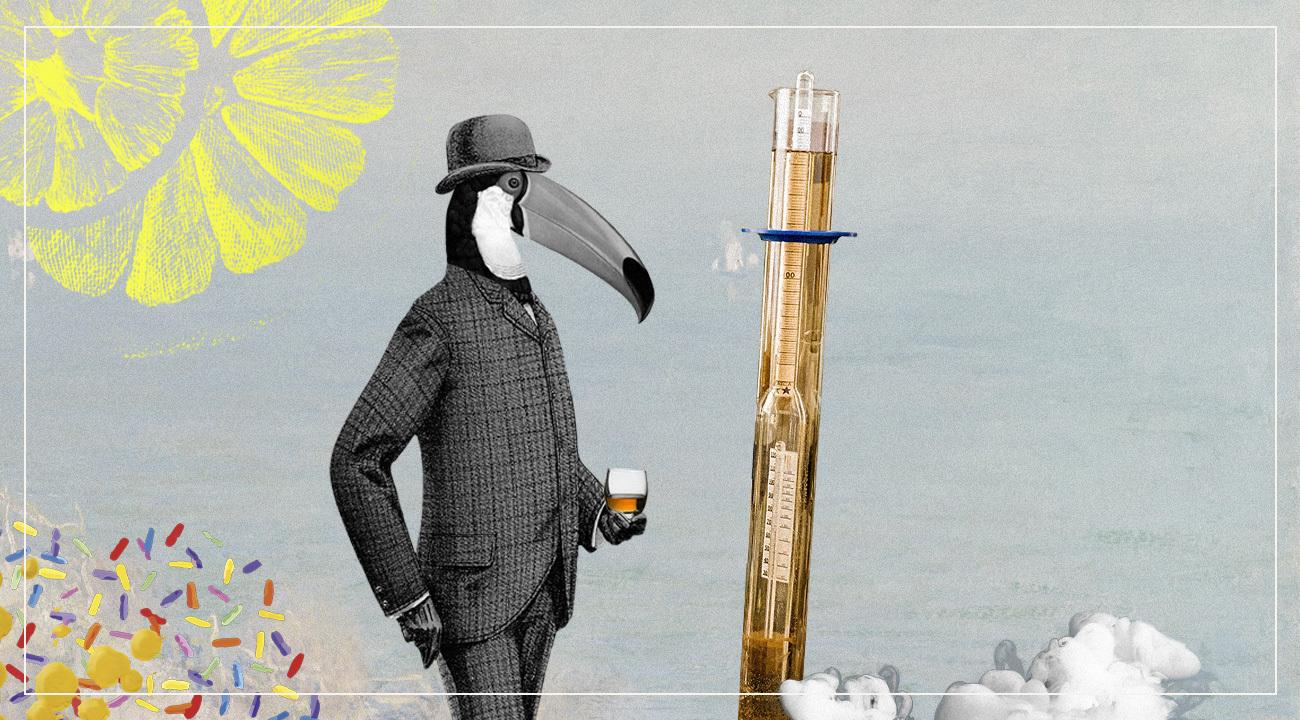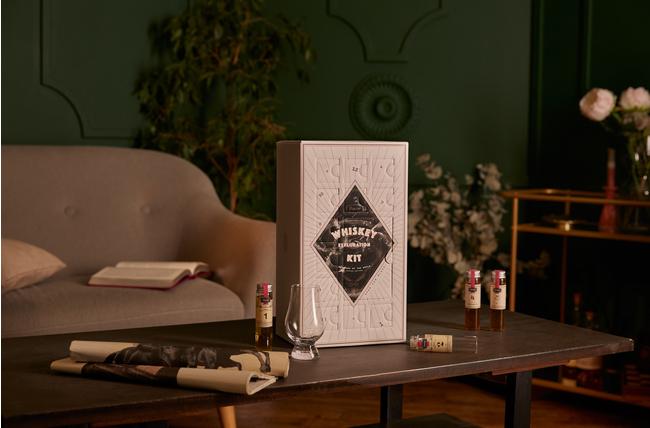
This is What Alcohol Content Tells you About Whisky
|
|
Time to read 8 min

|
|
Time to read 8 min
Ever wondered why a cold beer and a glass of whiskey feel so different? It’s all about alcohol content. For example, a beer usually has an ABV of 3-4%, giving you a light buzz, while whiskey usually sits at 40% ABV or more. That’s quite a jump!
The higher the alcohol content in whiskey, the more intense and complex the flavors are. This means the sipping experience is completely different than anything you'd get from a beer or wine.
In this article, you'll learn everything you need to know about whiskey alcohol content; why it matters, how it affects the taste, and how it can completely change your drinking game. Ready to learn how that ABV number is your new best friend when it comes to picking the perfect whiskey?
Understanding whiskey alcohol content is the secret to truly enjoying your dram like a pro! Whiskey is usually bottled at a minimum of 40% ABV, but that number can go way higher with cask-strength whiskeys that can blast you with 60% or more.
For aspiring mixologists, cask-strength whiskies include Aberlour’s 69.1%, Bruichladdich’s undiluted 70-72% and Port Charlotte’s bottling around the same ABV mark. Some American Whiskeys, especially before dilution, can reach up to around 80% ABV.
The higher the alcohol content, the more intense those bold, punchy flavors come through. We're talking smoky peat, rich caramel, and even a touch of spice that kicks your taste buds into overdrive.
When diluting a Whisky, a distillery has to take into consideration the angel’s share of alcohol that has been lost to evaporation during the aging process. This is usually between 0.5 and 1% every year, so with every year of aging, a Whisky will lose a little of its alcohol.
Let’s talk about Scotch Whisky first. Most bottles sit around the standard 40-43% ABV, delivering that perfect balance of flavor and kick.
The real fun begins when you step into cask-strength territory, where the ABV can go up to 50-60%. This is where the real whiskey warriors come out to play.
These high-proof whiskies are intense, bold, and packed with flavor that’ll hit your taste buds like a freight train. If you’re after something smooth and easygoing, stick with the standard, but if you’re feeling adventurous, cask-strength is a whole new world.
Then there's bourbon, your sweet, caramel-flavored friend, hanging out around 40-45% ABV. Bourbon’s higher alcohol content brings out those rich flavors of vanilla, oak, and caramel. When you crank that ABV up to 50%, you’re in for a fiery, full-throttle ride that delivers a punch of heat and depth, perfect for those who like their whiskey with a little extra attitude.
And let’s not forget about Rye Whiskey. Known for its spicy, peppery kick, rye comes in all shapes and sizes with ABVs ranging from the usual 40% to well over 50%. If you’re after something with a bite, rye’s your go-to. The higher the proof, the more intense the flavors. Prepare for a fiery, exciting experience.
Irish Whiskey, on the other hand, is generally triple-distilled, giving it a light, clean character. With an ABV around 40%, it’s an easygoing option that’s great for casual sipping or mixing.
The journey of alcohol content in whiskey is anything but straightforward. From the very first stages of production to the moment it lands in your glass, the alcohol percentage undergoes significant changes.
Let’s take a closer look at how whiskey alcohol percentage evolves during the production process and what that means for the final product.
It all begins with fermentation. At this stage, the grain mash mixes with water and yeast, which causes the sugars to ferment into alcohol.
What you end up with is "distiller’s beer," sitting at around 7-10% ABV. It’s far from a full-fledged drink yet, but this is where the alcohol content begins to take shape.
This is where the fun starts. In the still, the fermented liquid boils, and because alcohol has a lower boiling point, it evaporates first. As the vapor condenses back into liquid, the alcohol content gets cranked up to around 80% ABV.
That’s a serious leap from the modest start, but it’s necessary to concentrate the alcohol before it heads to the barrel.
Whiskey isn’t ready for aging at 80% because it’s way too intense at this point. So before going into the barrel, it’s diluted to around 62.5% ABV (125 proof). This is where the whiskey starts its slow maturation process, soaking up flavors from the wood while mellowing out.
The lower ABV allows for a smoother aging process, giving the whiskey more time to develop depth and complexity.
After years of aging, the whiskey is ready for bottling, but it’s often diluted once again to 40% ABV (80 proof). This is the sweet spot for most whiskeys, balancing the flavors and making it drinkable.
Some whiskeys, like cask-strength varieties, might stay stronger at around 60%, but for the most part, 40% is the go-to. It’s strong enough to offer flavor without overwhelming your senses.
From start to finish, the whiskey alcohol content evolves, each stage influencing its final taste and character.
After the whiskey has aged in the barrel, it's not always ready for bottling straight away. There are a couple of important steps that happen next to fine-tune the alcohol content and smooth out the overall experience.
Once the whiskey comes out of the barrel, it’s often diluted to a more manageable ABV before it hits the bottle. Remember, whiskey starts at a strong 62.5% ABV before aging, and distilleries usually bring that down to around 40-45% ABV for bottling. Why? Well, it's all about balance.
A higher ABV might pack more punch, but it can also overpower some of the finer flavors. By diluting the whiskey, distillers unlock a world of flavor, letting the drink’s true character take center stage without the alcohol stealing the spotlight.
Some people even prefer cask-strength whiskeys, which are higher-proof bottlings that let you control how much dilution you want to add to your glass.
Chillfiltration is a trend hailed by some and cursed by others, and it results in 46% ABV. Ardbeg and Bruichladdich are among their fans. This involves chilling the whiskey to low temperatures to remove fatty acids and other materials that might cause the whiskey to go cloudy.
The result is a cleaner, clearer whiskey that’s easier on the eye and smoother to drink. It comes with a catch, though. Chill-filtering usually happens at around 46% ABV, which some say can slightly reduce the complexity of the flavor. Still, if you like a whiskey that's pristine and clear, chill-filtering is the way to go.
Both dilution and chill-filtering are all about fine-tuning the whiskey, making sure that the final product is exactly how the distillers want it–balanced, flavorful, and ready for you to enjoy!
The alcohol content in whiskey isn’t just about the burn, it’s an important player in shaping the flavor and aroma that defines every sip.
A higher whiskey alcohol percentage brings a bolder, more intense experience, while a lower ABV can create a more approachable dram. So, how exactly does this work? Let’s break it down.
When a whiskey has a higher alcohol content, say around 50% or more, it unleashes a more powerful wave of flavors. The alcohol itself acts as a carrier, helping to extract the deeper, richer notes from the ingredients, the casks, and the aging process.
You’ll often find bold flavors like caramel, dark chocolate, and toasted wood, as well as a more pronounced spice kick. The aroma is more intense too, with strong, sometimes fiery vapors that can fill your nostrils before you even take a sip.
On the other hand, lower ABV whiskeys, generally around 40%, bring a gentler experience, letting more delicate flavors come to the forefront. You’ll notice floral undertones, light fruity hints, and a velvety mouthfeel.
Since the alcohol is less intense, you’ll find that the drink has a more rounded and softer aroma. These whiskeys are often easier to sip on for beginners or those who prefer a gentler experience. Don’t be fooled, though–just because the alcohol content is lower doesn’t mean the whiskey lacks flavor! It’s just a different, more refined approach.
As well as having a much higher ABV, Spirits like Whisky are often served with sugary mixers which can mean drinking far more calories than you realize.
Distilled Spirits are pretty much “zero carb”, meaning that their calories come from alcohol, not sugars. How many calories are we talking about? On average, about 65 calories per 30 ml (1 oz.) shot of Whiskey, Gin and the likes.
Of course, if you start messing around with mixers like cherry coke, grenadine syrup and sugared sprigs; the calorie count of your drink will change considerably.
If your mind is still set on mixed drinks, we recommend going for something simple, like Highball - a delicious Whisky cocktail made just with soda and lemon.
Besides, you can get this boozy refreshment in a can. Haiball, Flaviar’s Hard seltzer for Whisky lovers with low ABV, contains zero sugar, zero carbs, and 100% amazing flavor. A perfect alternative to enjoying Scotch, and you are less likely to munch away on a bag of potato chips.
Looking for a perfect gift for a Scotch lover? Check out Flaviar's fine selection of Best Scotch under $100, take them on a whisky exploration journey from the comfort of their home or gift them a whole year of fun with Flaviar membership.
Now that you know what whiskey alcohol content means, you are ready to find your next favorite drink. The world of whiskey is vast, though, so it’s not going to be easy. There are tons of different types of whiskeys to explore, from bold bourbons to sipping whiskeys that offer a more delicate, nuanced experience.
The alcohol content in whiskey directly impacts its flavor and your overall drinking adventure. A higher alcohol content can bring out powerful, rich notes, while a lower content can deliver a more approachable taste. Understanding how it all works will help you level up your whiskey game!
Ready to find your next favorite whiskey? Flaviar has an incredible selection waiting for you to explore.



